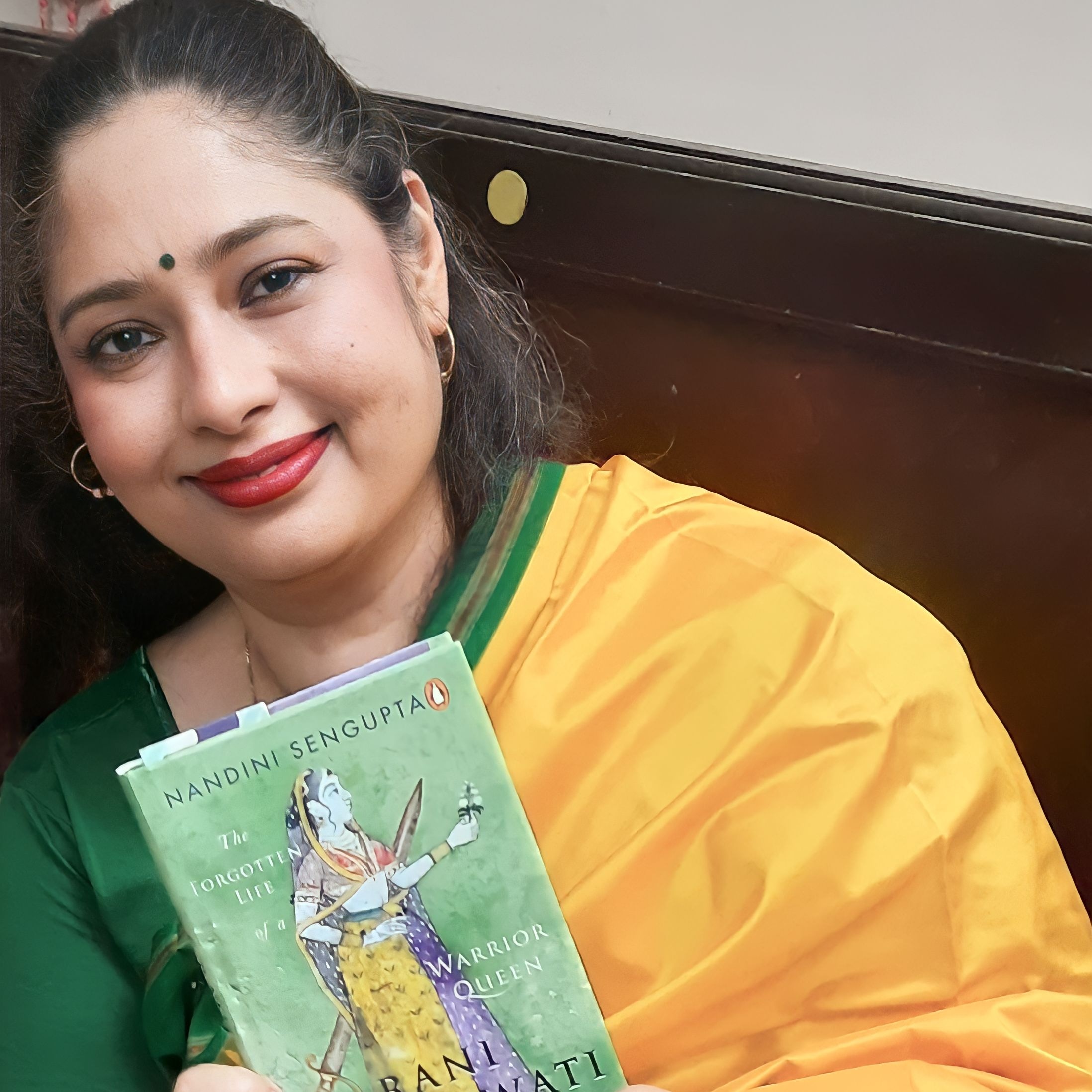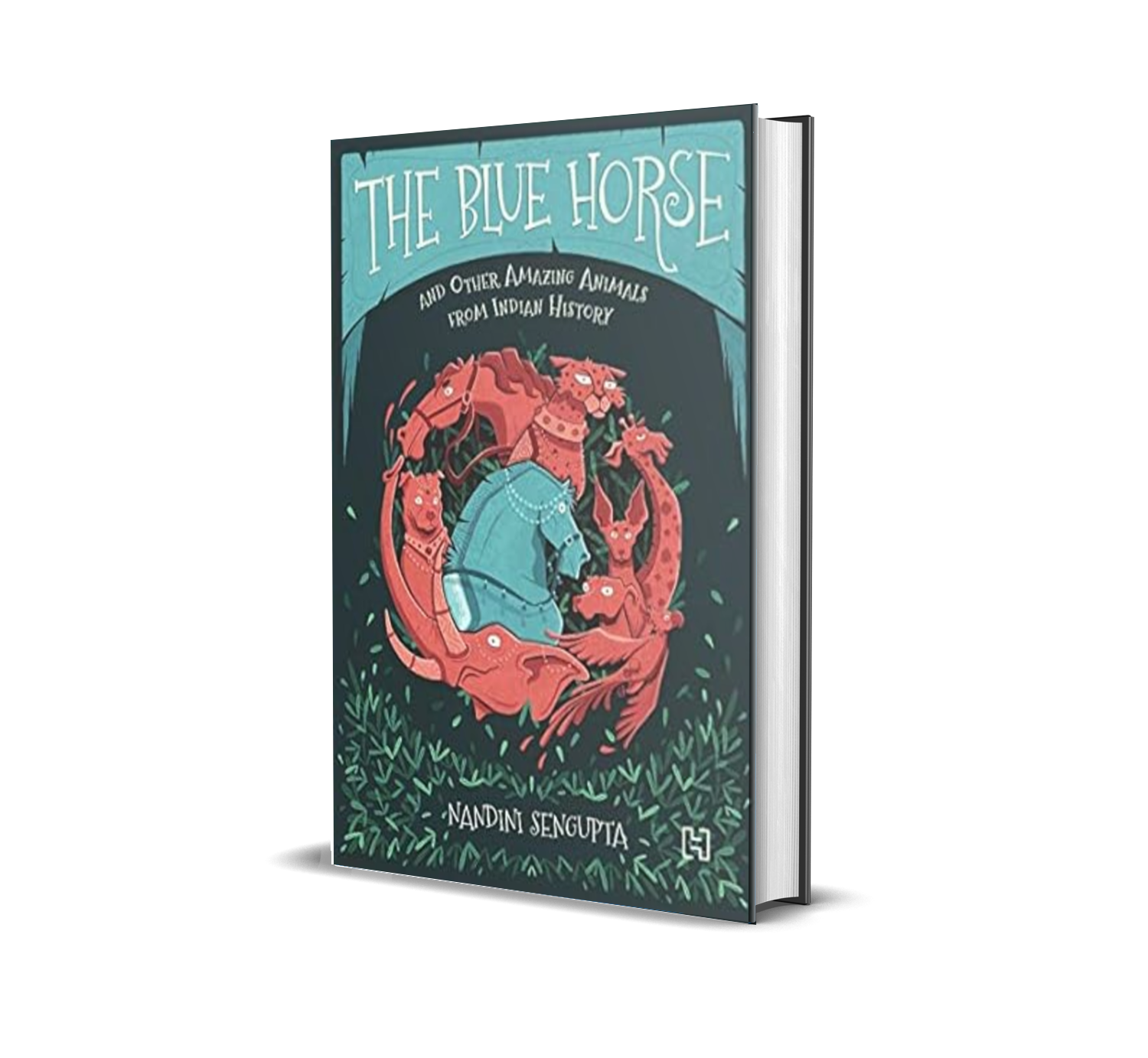Nandini Sengupta is a Pondicherry-based journalist and writer of historical fiction and narrative history. Her book credits include the bestselling The Blue Horse And Other Amazing Animals from Indian History which debuted in November 2020 and was shortlisted for Auther Awards 2021 in the children's fiction category, selected for the prestigious Parag Honour List, and won the Sahitya Akademi Bal Sahitya Puraskar in 2024. That apart, her well-known works include The King Within, The Poisoned Heart & The Ocean's Own, Book I, II & III of the Gupta Empire Trilogy, and The Story of Kalidas: The Gem Among Poets. Rani Durgawati: The Forgotten Life of a Warrior Queen is her first non-fiction historical biography and recently made it to the shortlist of the Auther Awards 2023 in the best non-fiction category. Nandini is regularly invited to speak at literary festivals like the Apeejay Kolkata Literary Festival, and Times Lit Fest Delhi among others as well as academic platforms like the South Asian Studies Association conference by Loyola Marymount University in the USA and TMYS lectures in India.
In an exclusive interview with Nitish Raj; Editor-in-Chief, Today Magazine the acclaimed author talks about her journey along with the various aspects of historical fiction.
Q.1 How has been your journey from being a journalist to becoming the Winner of the Sahitya Akademi Bal Puraskar 2024?
NSG: I feel very fortunate that I became a journalist before I became an author. Journalism teaches you three things – to listen to people from all walks of life; to look at all sides of a story before you write it and finally to read more than you write. All three factors are very important to a writer as well. In many ways, I never quite take off my journalist’s hat when I am writing a book. I am still writing a news story. The only difference is the story may have happened 500 or 1000 years ago.
Q.2 Your debut work; ‘Babies from the Heart’ is a non-fiction that has a foreword penned by Sushmita Sen, Miss Universe 1994 which talks about child adoption. How do you think the societal stigma associated with child adoption has led to the mental agony of parents?
NSG: I am an adoptive parent and I wrote Babies From the Heart to make sense of both my journey as well as offer some tips to others who are looking to adopt a child. There are many nuances in an adoptive parent’s journey but social stigma, in my humble opinion, is not top of that list. Parenting, whether biological or adoptive, is a personal choice and journey. I find it deeply offensive when people say, “You’ve done something so noble by adopting a baby.” My response is, “I am sorry, I did not adopt as a form of social service. I adopted a child for the same reason why others may conceive one biologically – to become a parent. Parenting is never easy, whether you’re a biological or adoptive one. But it is and always will be a personal issue, not a societal one.
Q.3 As a Historical Fiction Writer, you have written a trilogy on the Gupta Empire. What has been your research process while writing as you have covered the timeline of almost two centuries?
NSG: My love for history began, as it were, with a chance visit to the Ajanta Ellora caves in 2007. As a student of English Literature, I have always had a fascination for historical fiction thanks to authors like Saradindu Bandopadhyay, Bankim Chandra Chatterjee, Walter Scott, Hilary Mantel, and Bernard Cornwell among many others. But the Aurangabad trip made me want to know the story in history. So, for the next 9 years, I read history for fun focusing on classical India in particular. By 2016, the idea of a story featuring the imperial Guptas began to crystallize in my head. The Gupta era was India’s golden age economically, politically, creatively, scientifically, and culturally. Yet our school history books don’t do justice to this dynasty. Their footprint on the cultural (read popular) landscape of modern India is minuscule when compared to say the Mughals who are everywhere. I wanted the series to not only bring the Gupta emperors to life (that’s why the heroes of the three books are actual historical characters) but also bring the era alive in all its glory. I have done extensive research for nearly a decade before writing the books and I hope the trilogy -- The King Within, The Poisoned Heart, and The Ocean’s Own featuring Chandragupta Vikramaditya, Skandagupta, and Samudragupta respectively – offers readers some idea of what life in classical India was and how developed India was in the first half of the first millennium CE.
Q.4 Animals being the focus of your stories in the award-winning book ‘The Blue Horse’, how do you see the connection between history, and animals?
NSG: I love history, and I love animals, so The Blue Horse and Other Amazing Animals from Indian History is very close to my heart. Animals are the ultimate silent minority. They have always had a very significant role to play in some of the most turbulent events in history and yet their voices are never heard. We hear of the cataclysm unleashed by World War I but how many times do history books mention that more than 8 million horses, mules, and donkeys died in the great war? Every battle through history has had contributions from animals that have died fighting for humans. This is my way of telling their story, giving them a voice through time. The humans in the book are well-known historical characters. But they are not the protagonist of these stories, their pets are.
Q.5 Even after being primarily a novelist, why did you choose to write on Kalidas in ‘The Story of Kalidas – The Gem Among Poets’ who was a dramatist and poet of the highest order and not a novelist?
NSG: Kalidas was a literary giant. It was my honour to write a book that attempted to make him accessible to little children. Just because I am a novelist, does it mean I have to write about novelists alone? Kalidas makes an appearance in The King Within and later gets his own story in The Gem Among Poets. Rani Durgawati gets a story in The Blue Horse and later gets her own biography in Rani Durgawati; The Forgotten Life of a Warrior Queen. My writing is in many ways a continuation, one book leading on to the next. I write about historical characters I find fascinating. They may be warriors, queens, kings, poets, monks, and occasionally court cheetahs, war horses, battle dogs, and regal parrots.
Q.6 How significant is the role of a publishing house/industry expert in a writer’s journey?
NSG: Very important. Getting a good publishing house to back your literary effort is critical. A good publisher will bring on board good editors who are critical to the final shape your manuscript will take. I have been very fortunate to work with some phenomenal people and their contribution has enriched my writing enormously. Similarly, I don’t think I could have come this far without the help of my literary agent Kanishka Gupta of Writers Side. Getting a good agent to represent you is very important. In many ways, it is half the battle won.
Q.7 Do you think being a female author; it becomes comparatively easier to write in terms of understanding the psychology and perspective of the female historical figure as in your book, ‘Rani Durgawati – The Forgotten Life of a Warrior Queen’?
NSG: As a woman writer and a feminist, I am naturally drawn to stories like that of Rani Durgawati. Indian history’s male gaze and Delhi-bias is not unknown. As a result, many of the feisty, formidable, and fabulous feminine voices from our history have been written out of our history books. I am obsessed with bringing these stories back into the mainstream discourse. I want people to read about Rani Durgawati everytime they read about her adversary Emperor Akbar. I want readers to cheer for Abakka Chowta or Rudramadevi or Tarabai or Kittur Chennamma or Prabhavati Gupta or Didda alongside their male contemporaries. These are the she-roes from our history, and they deserve their stories to be told.
Q.8 What would be your words of wisdom for the budding writers?
NSG: Keep the language simple. Plot your stories in detail. Research, sketch, and obsess about your characters. Rewrite, rewrite, rewrite. But most importantly: read more than you write.






